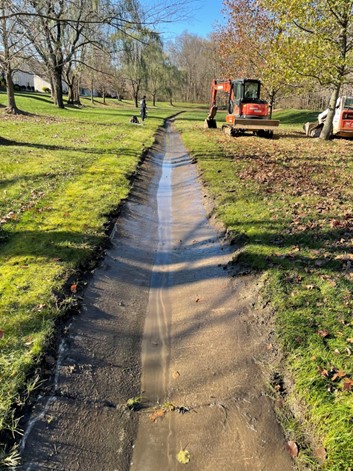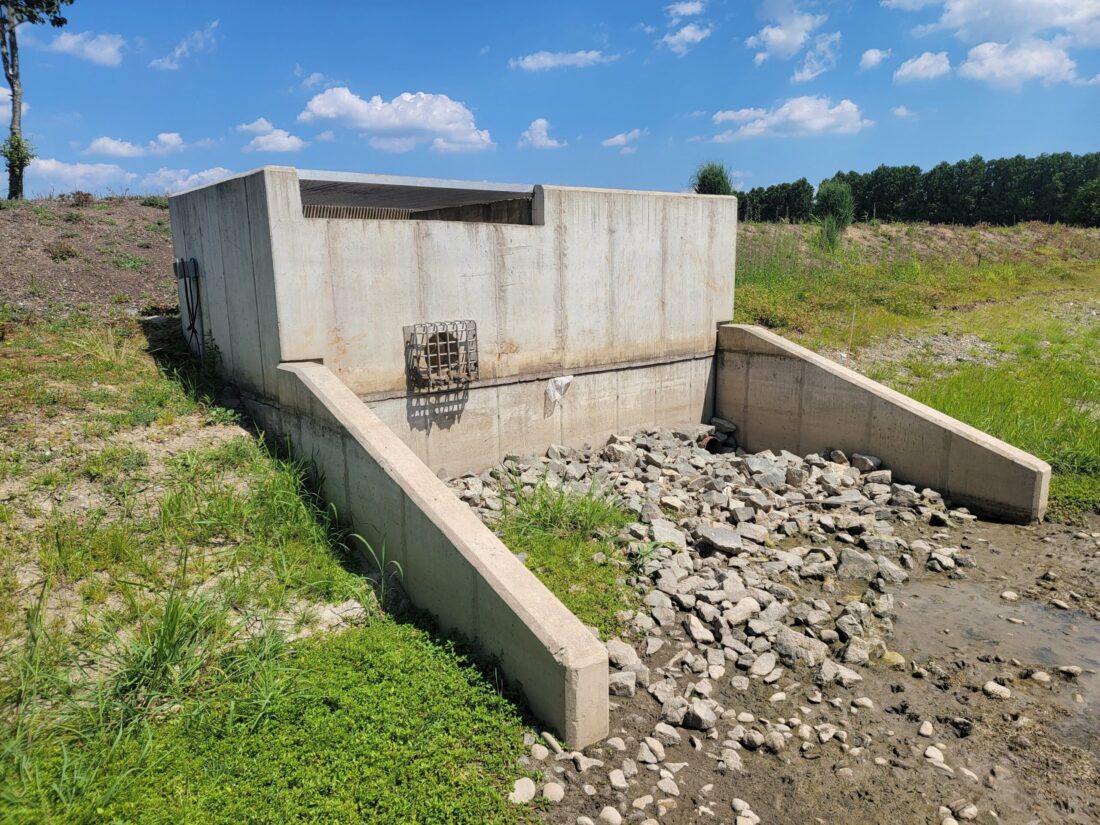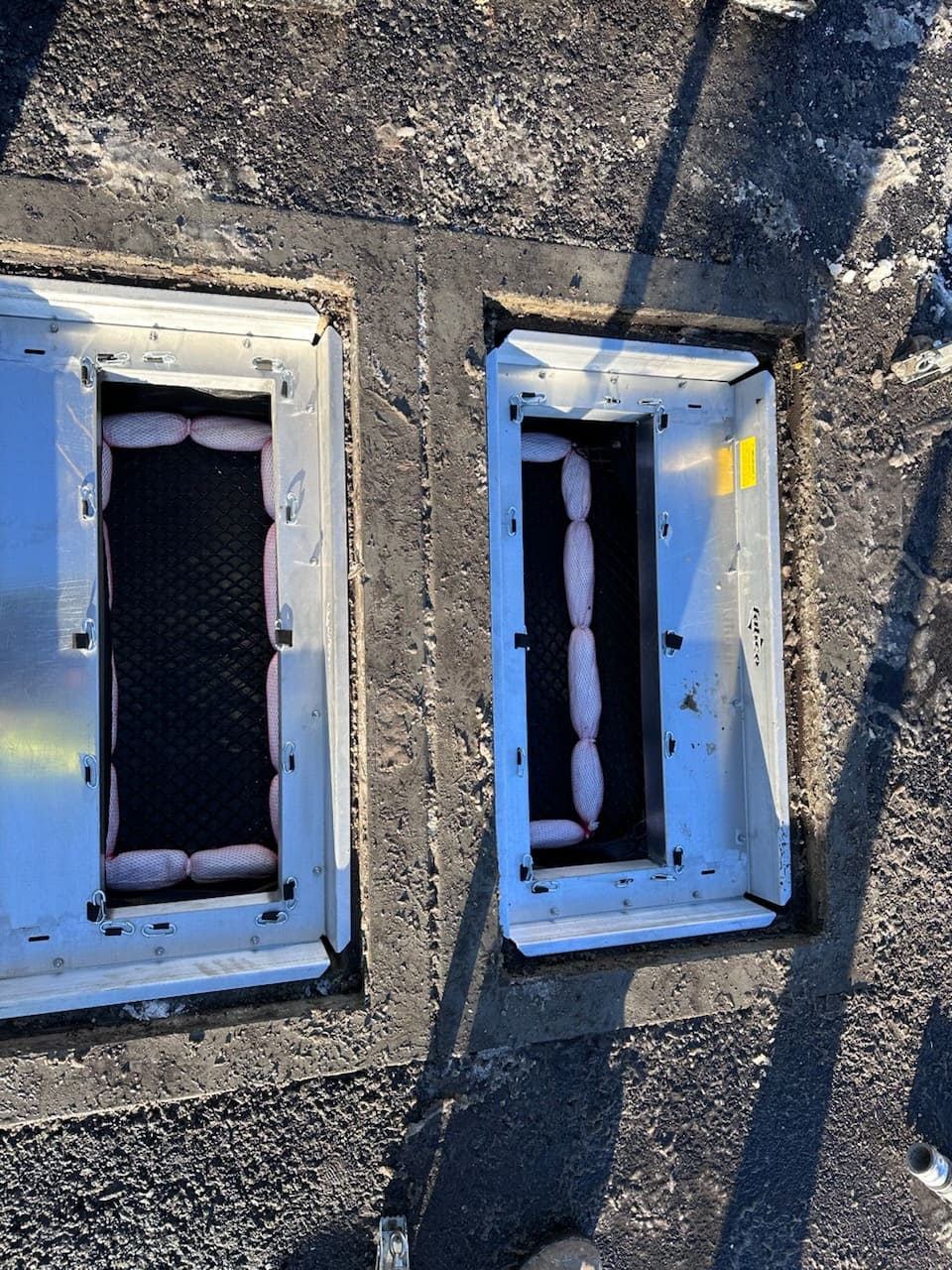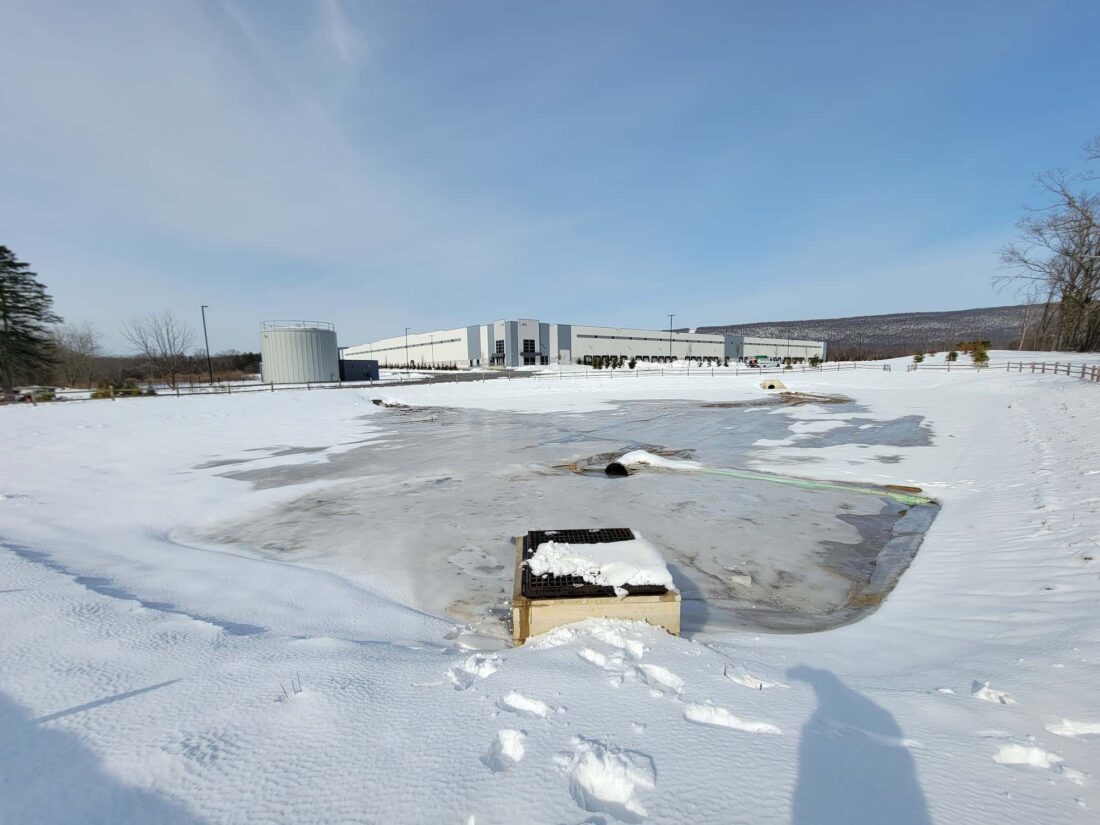
Sediment Removal from Ponds and Above Ground Detention Basins
Last Updated on May 28, 2024 by Stormwater Compliance Solutions
Sediment transport is a natural ongoing process in both natural ecosystems and man-made improvements. Sediment is present in stormwater, in all particle sizes: clay, silt, sand, organic matter, and floatable debris. When water velocity slows down, particles drop out of suspension through a gravitational process known as sediment deposition. At this point, sediment removal considerations are necessary.
The more mass the particle has, the easier it is to drop off the water and deposit it in an area. Particles that are part of a solution (water bound to dissolved solids) are much harder to fall out (of solution) in the sedimentation process and will likely carry on in the water transport process to much larger bodies of water like bays, lakes, and oceans.
Where Does Sediment Collect?
Common areas for sediment deposition are river eddies, deltas, lakes, ponds, fluvial flood planes, and stormwater basins. This article will discuss sediment deposition and removal within stormwater detention and retention basins.
Before sediment removal begins, you must establish the sedimentation depths and quantify the volume of sediment within the detention basin. To accomplish this, reference known elevation points and then measure the sediment up from that level. Those known points are usually outlet control structures (OCS), low-flow channels, orifices, weirs, or headwalls.
The best way to know these elevations and locations is through an as-built survey or grading plan from when the basin was constructed. Control points can be added for reference by a survey or GPS system.
Problems with Sediment Collection
Excess sediment eventually leads to detention pond problems such as standing water longer than the 72-hour design duration, excessive vegetation growing over the sediment, mosquito habitat, and other aesthetic and environmental nuisances.
Once known reference points have been established, a sediment removal plan can be prepared.
A thorough inspection and a professionally prepared survey can be done if a site plan cannot be obtained. During this phase, the perimeter of the basin, basin channels, inlet and outlet pipes, and any other distinguished features must be located. From there, an area can be derived, and the engineer or contractor can establish a target grade. A target grade is one that the basin will be restored to after sediment removal, usually the original bottom of the basin.
Digging below the original bottom of the basin can create standing pools of water and is typically prohibited by local review districts and permitting authorities because the additional volume and hydraulic capacity would be created.
When Do You Need a Permit for Sediment Removal?
Depending on the basin’s location and the scope of work (size of disturbance), a permit may be to do this work. Permits might include a wetlands general permit for disturbance to the man-made wetland or a soil erosion and sediment control permit issued by a County Soil District.
How do you remove sediment from a detention pond or basin? After the steps above have been completed, remove the water from the basin by pumping or gravity flow. Next, move the sediment into rows or piles to allow trapped water to find its way out of the basin.
If the basin is wet, berms of stone can be constructed to pile or pump the sediment to allow it to dry. Other more sophisticated measures can be used, such as dredging or pumping to Geotubes®. That will be discussed in future journals.
Is Sediment Testing Needed for Sediment Removal?
Sediment removal solutions involve sediment testing before removal can begin. Testing can be performed on wet and dry ponds For wet ponds, sediment retention tests are performed to estimate the volume and depth of retained sediment. Sonar depth measurement devices and level rods are used to measure bottom elevations.
What’s Next?
Once measurements are obtained — either with sonar capabilities or levels and rods — Before sediment removal, dry ponds must also be tested using hydraulic conductivity This testing estimates the rate at which stored water is infiltrated into the soil.
The Construction Phase and Sediment Removal
When should a sediment basin be cleaned? Sediment basins are often temporary during construction and serve as an interception point for sediment runoff, typically from a construction site. The sediment removal efficiency of the sediment pond can be upward of 80 percent, depending on the soil particle size.
After the area is stabilized, many of these temporary sediment basins are done away with; however, they can be used for permanent stormwater management after the construction phase. Both sediment traps and basins are used—it just depends on the size of the drainage area as to what type of sediment removal to use.
What Is Basin Restoration During Sediment Removal?
How to clean a detention basin or restore the area to turf or landscape becomes important once sediment removal is complete. It’s important that the new landscape or turf can adequately handle water and rainfall. Disturbing the soil reduces voids in it, which can hurt water availability and quality. A landowner may unwittingly use pesticides, fertilizers, and other chemicals on compacted soil, which affects quality. Also:
- Plant establishment depends on roots’ access to air and water in soil voids.
- Rain falling on compacted soil can no longer be absorbed and conveyed downhill in the soil but instead runs off, carrying pollutants with it.
Sites may use ripping once construction is complete, but ripping and folding in compost must occur together so that soil does not return to a compacted state. For all disturbed areas, compost should be tilled approximately into the top few inches of native soil. There are regulations on types of compost as well.
For example, compost must be weed, seed, and pollutant free, must have a carbon-nitrogen ratio of 35:1, and 100 percent of the compost must pass a ½-inch screen to be usable. Biological treatments (bacteria) may also be added to soil to enhance the soil’s viability and ability to support plant life. The amendment of soil should occur at the end phase of construction.
In some cases, however, detention ponds and basins are kept post-construction to distribute rain runoff, preventing flooding. Once sediment removal is complete, these basins and ponds must be maintained regularly to ensure their functionality. After sediment removal, detention ponds can be an eyesore if they need to be properly maintained. Obstructions from debris, erosion and mechanical device failure are common problems when maintaining ponds. For detention ponds to function properly, they require:
- Stabilized slopes
- Keeping vegetation under control (e.g., mowing, landscaping, trimming)
- Keeping the pond free of debris and trash
- Maintaining mechanical devices and functionality
- Removing excess sediment
All in all, sediment removal is imperative for stormwater management and construction practices, and ponds may be used after construction is complete to manage stormwater runoff. To find out more about stormwater management see our blog on The Importance of Stormwater Management.




